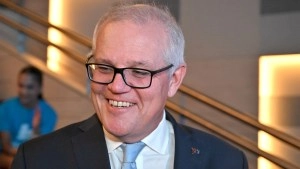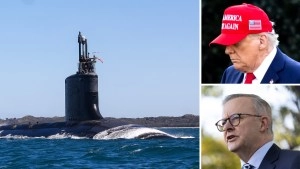As Anthony Albanese meets with counterparts at the G7 summit in Canada, hoping to shore up the AUKUS alliance against US doubts, its worth revisiting the several other times foreign countries have sought to acquire American nuclear submarine propulsion technology.
The AUKUS pact is a historic and controversial project thats been the subject of endless discussions in Australia since it was announced in 2021, but the country is far from unique in its ambitions to acquire so-called SSN submarines.
Researchers at the US Library of Congress have noted there have been at least six other countries that have asked the US or UK to share the American nuclear propulsion technology: France, Italy, the Netherlands, Japan, Canada and Pakistan all made approaches during the Cold War. Even Australia has tried at least twice before, including at the end of the Howard era.
Related Article Block Placeholder Article ID: 1210084

Prior to the signing of the AUKUS pact, the US had only agreed to share the tech with one other country: the UK. The two countries signed a mutual defense agreement in 1958, allowing for the transfer of a nuclear plant and reactor fuel to be used in a submarine.
The US agreed to the deal only because of special circumstances, a US congressman wrote in a letter to the countrys defence and energy secretaries in 1987.
The British, having already embarked in developing their own naval nuclear propulsion plant, encountered problems and requested the assistance of the United States, the letter said, according to the Library of Congress. The United States decided to help in nuclear propulsion and provide nuclear weapons technology because we needed to have British nuclear submarines and weapons on line in a strategic location at the earliest date. We also took into account the special relationship we had with the British and our close cooperation on nuclear matters during [World War II], including the Manhattan project.
Like Australia did under Scott Morrison, Canada initially turned to the UK when it sought to acquire the US tech in the late 1980s. And just like Australia did, the Canadians still needed approval from Washington.
Politicians there had several reservations against the idea, including that any potential Canadian nuclear accidents could further limit the ability for the US to dock its submarines in ports around the world.
More and more ports of the world are being closed to the US Navy for reasons of antinuclear sentiment around the world, Senator J. James Exon told Congress in 1988. From New Zealand to the Philippines to northern Europe, we are faced with a serious challenge to the continued operation of and support for the necessary presence of the US Navy. In short, in this era of nuclear phobia, we must maintain and enhance our safe standards of shipboard nuclear propulsion.
At the time, Canada had been criticised by NATO allies for not spending enough on defence, according to London School of Economics senior lecturer Luc-Andr� Brunet.
In June, 1987, Ottawa unveiled a plan to acquire up to 12 nuclear-powered submarines, Brunet wrote in The Globe and Mail last year. The hefty price tag running into tens of billions of dollars would address allied complaints about Canadas chronic underspending.
Canada was also keen to counter Russias military presence in the Arctic Ocean, and saw the acquisition of the SSNs as a way to guarantee its security. But Canada was also bothered by US incursions into northern waterways that it considered part of its territory.
The chief political appeal of acquiring the submarines was thus in its implicit defence of Canadian sovereignty from the Americans & this emphasis on sovereignty did not go unnoticed in Washington, Brunet wrote.
The Canadian efforts to acquire the submarine technology lasted only two years, before the government in Ottawa scrapped the project in 1989. By that time, Brunet wrote, the concerns about sovereignty had been resolved via an Arctic cooperation agreement with the US, and the Canadian budget had come under serious strain, necessitating cuts to costly military initiatives.
Related Article Block Placeholder Article ID: 1210045

The about-face meant that the US never had to make a final decision on whether to allow its northern neighbour to receive the technology.
Australia has made assurances to the US it will protect technology security avoiding theft of the technology by spying adversaries and mitigate the risk of nuclear accidents. Both of those issues arose during the Canadian discussions in the 1980s, and it appears Australia has convinced the US it can be trusted.
Defence spending is another common issue. The US has used the AUKUS pact to put pressure on Australia, and would like the ally to spend about 3.5% of GDP on defence, which would be nearly twice as much as it spends today. Australia has instead said its on track to up its spending from 2% to 2.3%.
Albanese has argued Australia shouldnt set an arbitrary target for defence spending before deciding how exactly the money should be spent.
There are other doubts remaining as well. During Albaneses G7 visit, he will reportedly seek to make several arguments to US President Donald Trump about the merits of AUKUS. According to Reuters, Albanese plans to highlight Australian financial support for the US submarine industry and the access American subs will get to maintenance yards in Australia.


